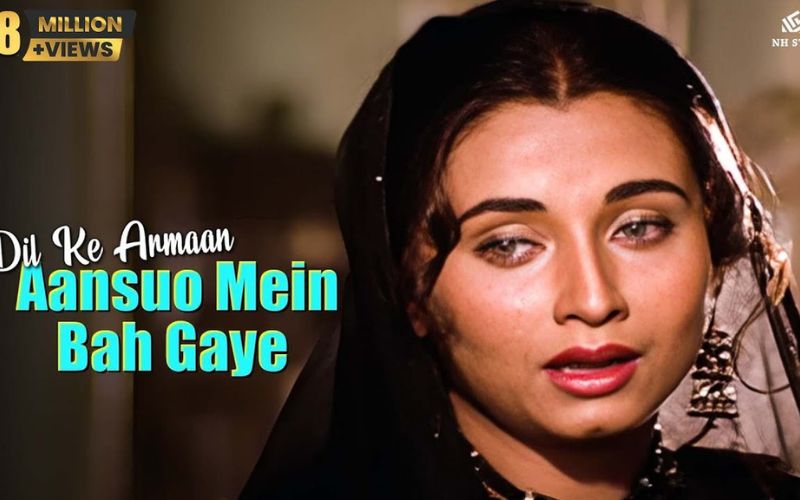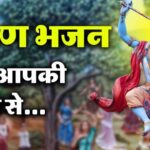“Dil Ke Armaan Aansuon Mein Beh Gaye” is a poignant and emotive Hindi song that has captivated audiences for decades. This timeless classic delves into the depths of human emotions, painting a vivid picture of the turmoil and yearnings that reside within the heart. The lyrics of this song have the power to evoke a profound sense of melancholy, resonating with those who have experienced the bittersweet pangs of love and loss.
As you delve into the translated lyrics and the analysis of this beloved song, you’ll discover the intricate tapestry of emotions that the songwriter has woven, inviting you to embark on a journey of self-reflection and a deeper understanding of the human experience.
Background and significance of the lyrics
“Dil Ke Armaan Aansuon Mein Beh Gaye” is a song that has become a hallmark of Hindi cinema, transcending the boundaries of its original context. The lyrics, penned by the renowned lyricist Anand Bakshi, are a testament to his mastery of the written word and his ability to capture the nuances of the human condition.
The song was originally featured in the 1969 film “Khamoshi,” directed by Asit Sen and starring Rajesh Khanna and Waheeda Rehman. The emotive melody, composed by the legendary Sachin Dev Burman, further amplifies the poignancy of the lyrics, creating a seamless synergy between the words and the music.
The significance of “Dil Ke Armaan Aansuon Mein Beh Gaye” lies in its timeless appeal and its ability to resonate with audiences across generations. The song’s enduring popularity is a testament to its universal themes of love, loss, and the human experience, which continue to captivate and move listeners to this day.
Translating the lyrics into English
Now, let’s delve into the translated lyrics of “Dil Ke Armaan Aansuon Mein Beh Gaye”:
| Hindi Lyrics | English Translation |
|---|---|
| Dil ke armaan aansuon mein beh gaye | The desires of the heart have flowed into tears |
| Dil ke armaan aansuon mein beh gaye | The desires of the heart have flowed into tears |
| Tujhe dekhne ki tamanna thi | There was a longing to see you |
| Tujhe paane ki tamanna thi | There was a longing to possess you |
| Dil ke armaan aansuon mein beh gaye | The desires of the heart have flowed into tears |
| Dil ke armaan aansuon mein beh gaye | The desires of the heart have flowed into tears |
| Koi aata, koi jaata | Someone comes, someone goes |
| Koi aata, koi jaata | Someone comes, someone goes |
| Dil ke armaan aansuon mein beh gaye | The desires of the heart have flowed into tears |
| Dil ke armaan aansuon mein beh gaye | The desires of the heart have flowed into tears |
As you can see, the lyrics poetically convey the deep-rooted emotions of the protagonist, who is grappling with the bittersweet aftermath of a love that has slipped through their fingers. The repetition of the central line, “Dil ke armaan aansuon mein beh gaye,” emphasizes the overwhelming sense of heartache and the inability to reconcile the desires of the heart with the harsh realities of life.
Analysis of the emotions portrayed in the song
The lyrics of “Dil Ke Armaan Aansuon Mein Beh Gaye” are a tapestry of complex emotions, woven together with the delicate threads of longing, loss, and the fleeting nature of human connections.
The opening lines, “Dil ke armaan aansuon mein beh gaye,” convey a profound sense of resignation and acceptance. The desires of the heart, once burning bright with hope and anticipation, have now been reduced to tears – a poignant acknowledgment of the fragility of love and the pain that accompanies its absence.
The subsequent lines, “Tujhe dekhne ki tamanna thi, Tujhe paane ki tamanna thi,” further amplify the emotional turmoil. The protagonist’s yearning to see and possess the beloved is palpable, underscoring the depth of their attachment and the void left in its wake.
The repeated refrain, “Koi aata, koi jaata,” introduces a sense of transience and the fleeting nature of human connections. The ebb and flow of people in the protagonist’s life serves as a bittersweet reminder of the impermanence of relationships, adding to the melancholic undertone of the song.
Throughout the lyrics, the imagery of tears and the heart’s desires being subsumed by them evokes a powerful metaphor for the emotional journey of the protagonist. The song becomes a vessel for the expression of universal human experiences, transcending the boundaries of time and space, and resonating with audiences on a profound level.
Historical context of the song
“Dil Ke Armaan Aansuon Mein Beh Gaye” is a product of the golden era of Hindi cinema, a time when the industry was witnessing a surge of creativity and artistic expression. The song was released in 1969, a pivotal year that marked the transition from the romantic musicals of the 1950s to the more introspective and socially conscious films of the 1970s.
The song’s inclusion in the film “Khamoshi” is significant, as the movie itself was a departure from the mainstream Bollywood narratives of the time. Directed by Asit Sen, “Khamoshi” delved into themes of mental illness, family dynamics, and the personal struggles of its protagonists, presenting a more nuanced and realistic portrayal of the human experience.
The collaboration between the legendary lyricist Anand Bakshi and the iconic composer Sachin Dev Burman was a hallmark of this era, as they seamlessly wove together poetic verses and soulful melodies to create timeless classics that continue to captivate audiences to this day.
The historical context of “Dil Ke Armaan Aansuon Mein Beh Gaye” underscores the song’s enduring relevance and its ability to transcend the boundaries of its original cinematic setting, becoming a testament to the enduring power of art to capture the universal human experience.
Popular renditions and covers of the song
“Dil Ke Armaan Aansuon Mein Beh Gaye” has become a staple in the repertoire of numerous renowned singers and artists, with each rendition offering a unique interpretation and emotional resonance.
One of the most iconic versions of the song is the original recording by the legendary Lata Mangeshkar. Her haunting and emotive vocals have become synonymous with the song, capturing the sheer depth of the lyrics and the raw vulnerability of the protagonist’s journey.
Over the years, the song has also been covered by various other acclaimed artists, including Mohd. Rafi, Asha Bhosle, and Shreya Ghoshal, among others. Each interpretation brings a fresh perspective to the lyrics, highlighting the versatility and timelessness of the composition.
In recent times, the song has also been featured in various Bollywood films and television shows, further cementing its place in the cultural landscape of India. These modern renditions have introduced the song to a new generation of listeners, ensuring its continued relevance and impact on popular culture.
The enduring popularity of “Dil Ke Armaan Aansuon Mein Beh Gaye” is a testament to the power of the human voice to convey the nuances of emotion and the universal resonance of the song’s themes. Each interpretation serves as a unique window into the emotional journey of the listener, further solidifying the song’s status as a cherished and beloved classic.
The impact of “Dil Ke Armaan Aansuon Mein Beh Gaye” on popular culture
“Dil Ke Armaan Aansuon Mein Beh Gaye” has left an indelible mark on the tapestry of Indian popular culture, transcending the boundaries of its original cinematic setting and becoming a beloved staple in the hearts and minds of audiences across generations.
The song’s enduring popularity can be attributed to its ability to capture the essence of the human experience, resonating with individuals who have grappled with the bittersweet pangs of love, loss, and the fleeting nature of relationships. Its poignant lyrics and haunting melody have become a touchstone for the expression of deep-rooted emotions, serving as a canvas for personal reflection and a shared understanding of the human condition.
Beyond its immediate impact within the realm of Hindi cinema, “Dil Ke Armaan Aansuon Mein Beh Gaye” has also found its way into various other forms of artistic expression. The song has been featured in numerous television shows, stage productions, and even as a source of inspiration for contemporary musical artists, who have reinterpreted and reimagined the classic composition in their own unique styles.
The song’s influence has also extended into the realm of popular culture, with its lyrics and melodies being widely recognized and cherished by music aficionados and casual listeners alike. The song’s ability to transcend linguistic and cultural barriers has contributed to its global recognition, solidifying its status as a timeless and universally relatable work of art.
The enduring impact of “Dil Ke Armaan Aansuon Mein Beh Gaye” on popular culture serves as a testament to the power of music and lyrics to connect individuals, evoke emotions, and leave a lasting imprint on the collective consciousness of society.
Related songs and artists in the same genre
“Dil Ke Armaan Aansuon Mein Beh Gaye” is part of a rich tapestry of Hindi film songs that explore the depths of human emotions, particularly the bittersweet experiences of love and loss.
Some other notable songs in this genre that share a similar emotional resonance include:
- “Woh Lamhe Woh Palkon Ki Chhaon Mein” from the film “Zeher” (2005), composed by Anu Malik and penned by Sayeed Quadri.
- “Tujhe Kitna Chahein Aur” from the film “Kabir Singh” (2019), composed by Sachet-Parampara and written by Irshad Kamil.
- “Tujhe Kitna Pyaar Karte Hain” from the film “Kabir Singh” (2019), also composed by Sachet-Parampara and written by Irshad Kamil.
- “Tujhe Kitna Pyaar Karte Hain” from the film “Aashiqui” (1990), composed by Nadeem-Shravan and written by Sameer.
- “Tere Bina Zindagi Se Koi” from the film “Aandhi” (1975), composed by R.D. Burman and written by Gulzar.
These songs, along with “Dil Ke Armaan Aansuon Mein Beh Gaye,” share a common thread of exploring the complexities of the human heart, the pain of unrequited love, and the bittersweet aftermath of relationships.
The artists behind these timeless compositions, such as Sachin Dev Burman, Anand Bakshi, Gulzar, and Irshad Kamil, have left an indelible mark on the landscape of Hindi film music, creating works that continue to resonate with audiences across generations.
Exploring the lyrical style and poetic elements in the song
The lyrics of “Dil Ke Armaan Aansuon Mein Beh Gaye” are a testament to the mastery of Anand Bakshi, a renowned lyricist who has left an indelible mark on the Hindi film industry.
The song’s poetic style is characterized by its use of vivid imagery and metaphors that seamlessly convey the emotional turmoil of the protagonist. The central line, “Dil ke armaan aansuon mein beh gaye,” is a powerful metaphor that captures the essence of the song’s themes – the desires of the heart being subsumed by the tears of sorrow and loss.
The repetition of this line, along with the complementary lines “Tujhe dekhne ki tamanna thi, Tujhe paane ki tamanna thi,” creates a haunting and introspective rhythm that echoes the protagonist’s inner struggle. This cyclical structure, coupled with the use of simple yet evocative language, heightens the emotional impact of the lyrics and invites the listener to empathize with the character’s journey.
Bakshi’s poetic prowess is further evident in the use of alliteration and assonance, which lend a melodic quality to the lyrics. The repetition of the “a” and “e” sounds in phrases like “aansuon mein beh gaye” and “tamanna thi” adds to the lyrical flow and the overall musicality of the song.
Furthermore, the incorporation of the metaphor “Koi aata, koi jaata” introduces a sense of transience and the fleeting nature of human connections, further amplifying the melancholic undertone of the song. This poetic device serves as a powerful tool in conveying the universal themes of love, loss, and the ephemeral nature of life.
The lyrical style and poetic elements of “Dil Ke Armaan Aansuon Mein Beh Gaye” are a testament to Anand Bakshi’s mastery of the written word and his ability to craft timeless compositions that continue to captivate and resonate with audiences across generations.
Conclusion
“Dil Ke Armaan Aansuon Mein Beh Gaye” is a timeless classic that has the power to transcend time and space, touching the hearts of listeners with its poignant lyrics and haunting melody. The song’s enduring popularity is a testament to its universal appeal, as it captures the essence of the human experience – the joys and sorrows, the triumphs and tribulations, and the fleeting nature of love and connection.
As you reflect on the translated lyrics and the emotional depth of the song, you can’t help but be drawn into the protagonist’s journey, empathizing with their struggles and the bittersweet aftermath of a love that has slipped through their fingers. The imagery of the heart’s desires being subsumed by tears is a powerful metaphor that resonates with the universal human experience, reminding us of the fragility of our emotions and the importance of cherishing the moments we have.
The historical context of the song, its impact on popular culture, and the diverse interpretations by renowned artists further underscore the enduring legacy of “Dil Ke Armaan Aansuon Mein Beh Gaye.” It is a testament to the power of art to transcend the boundaries of time and space, connecting individuals across generations and cultures through the universal language of emotion.
As you bid farewell to this poignant and emotive journey, you can’t help but feel a sense of melancholy and a deeper appreciation for the complexities of the human experience. The song has left an indelible mark on your heart, reminding you of the importance of embracing the bittersweet moments that make up the tapestry of life.
If you’ve found this exploration of the lyrics and emotions behind “Dil Ke Armaan Aansuon Mein Beh Gaye” to be meaningful, we encourage you to delve deeper into the world of Hindi film music and the enduring legacy of timeless classics. Subscribe to our newsletter to stay updated on the latest articles, song analyses, and cultural insights that celebrate the richness of this beloved art form.



